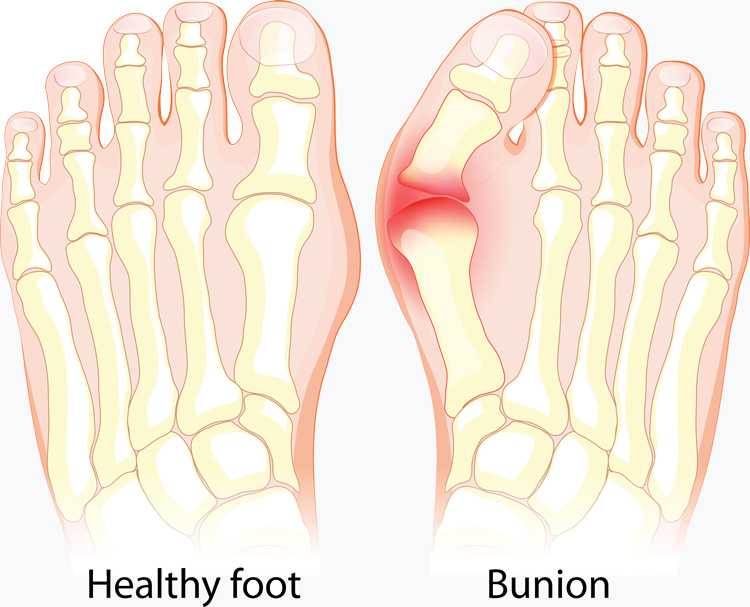Bunion Surgery/Minimally Invasive Bunion Surgery

What is it: A Bunion is a foot deformity characterised by a bony prominence that develops on the outer surface of the big toe. The big toe turns towards the second toe with the result being pain, deformity and difficulty with shoe wear.
There are a number of potential causes including footwear, genetics, arthritis and patient’s anatomy.
Management: Bunions can be treated operatively or non-operatively. Dr Unsworth-Smith will assess and diagnose your bunion and decide whether surgery is an option for you.
Nonoperative management includes: pain relief medication, alternative foot wear and padding to protect the bunion.
Surgery includes an incision on the inside of the foot followed by a number of bone cuts to straighten the toe.
The aim of surgery to provide pain relief and to restore the normal biomechanics of the foot.
A second method is to perform this through 4 small incisions (Percutaneous Bunion Surgery). The bones of the big toe are cut with the use of a high-speed burr and X-ray. 2-3 screws will be used to hold the new position.
A decision will be made during the consult as to which surgery is best suited to you.
Postoperatively: Patients are able to go home on the day of surgery or the next day. You will have an ankle block (local anaesthetic to numb the foot) which will help control pain after the surgery. The wound will take approximately 2 weeks to heal. You will be placed into a surgical shoe for 2-4 weeks after which you will begin transitioning to normal shoe wear.
Return to most activities will be between 12 weeks with full recovery 3-6 months.